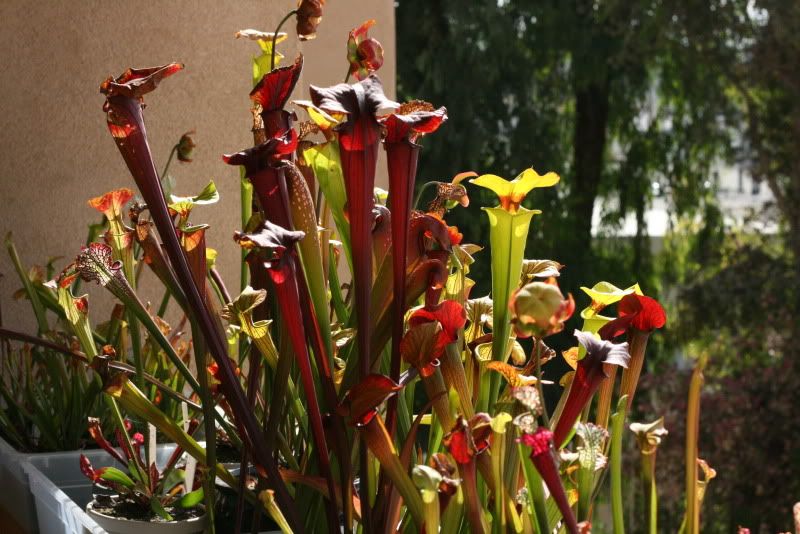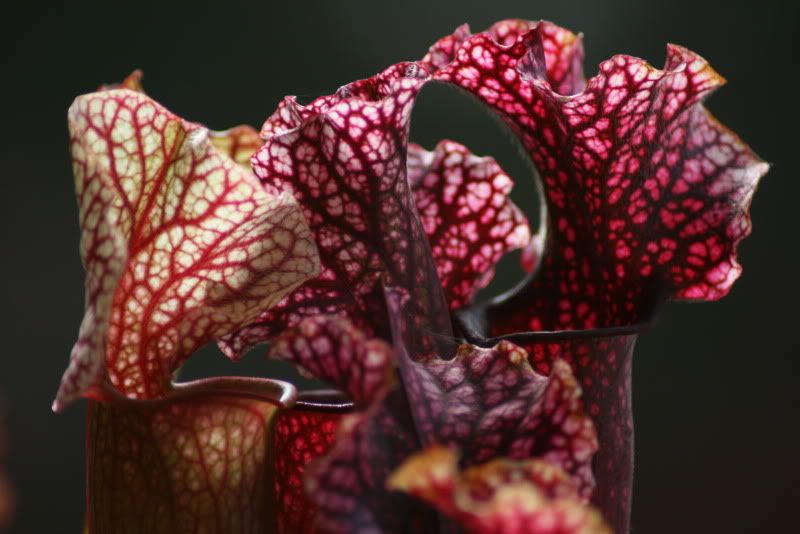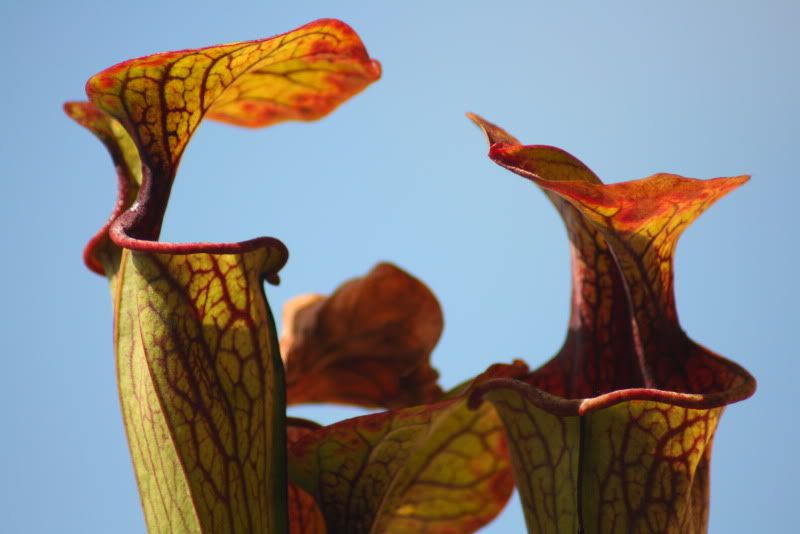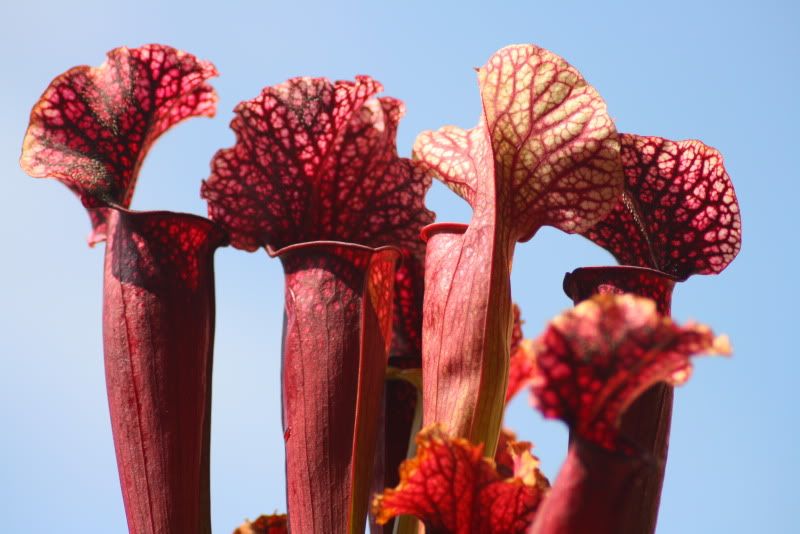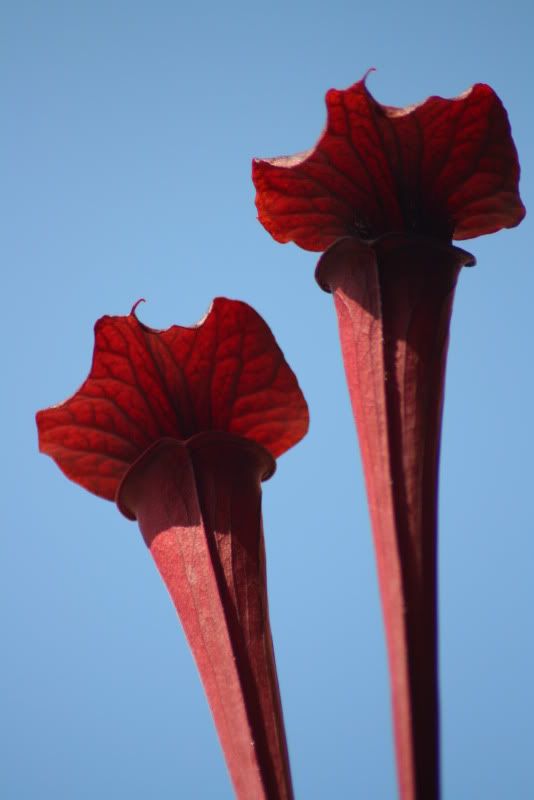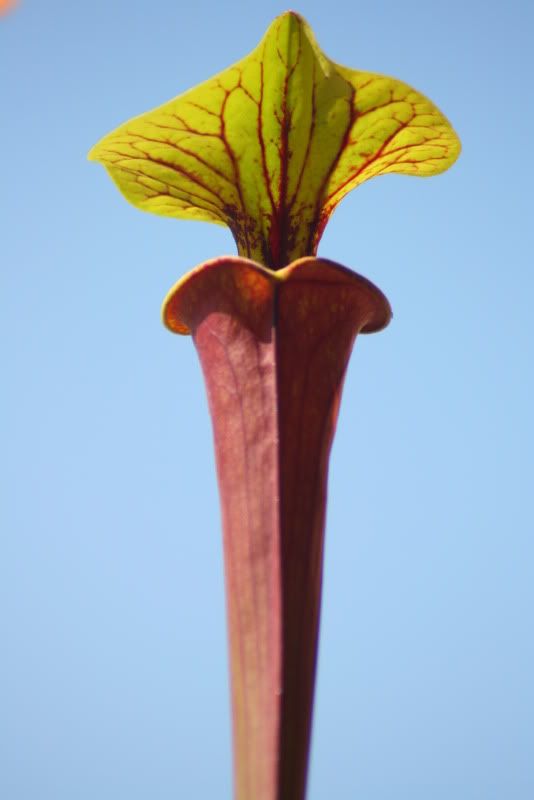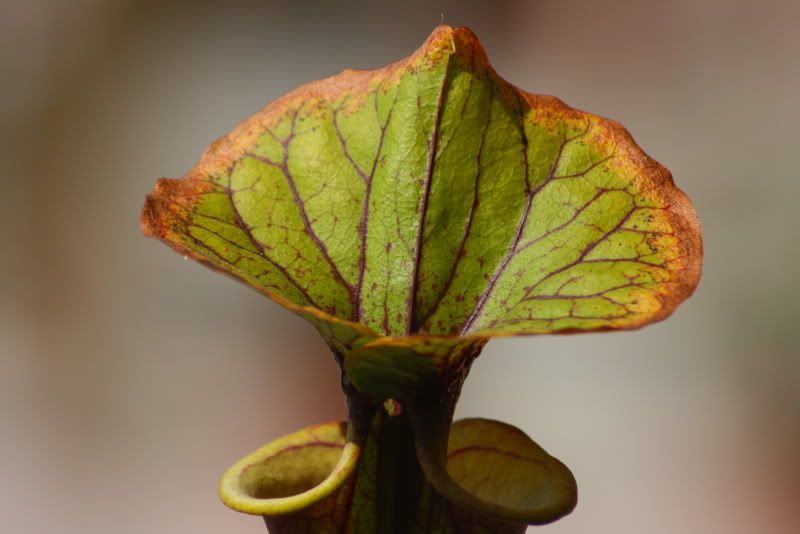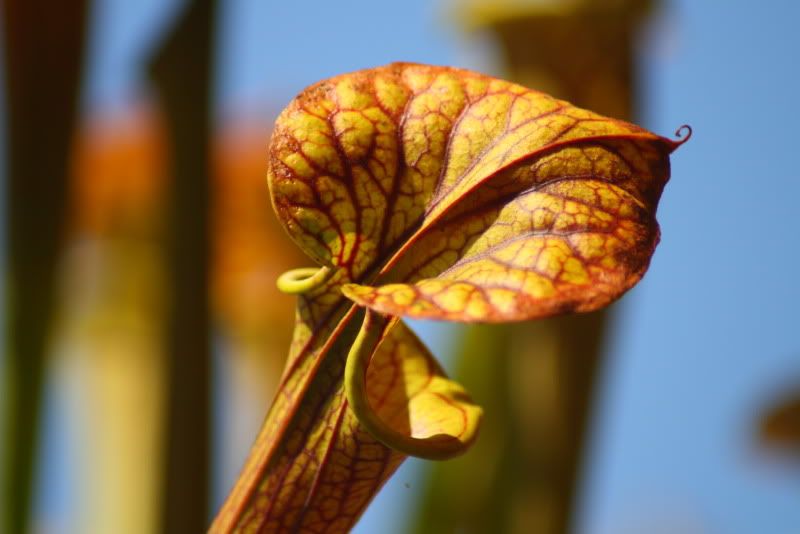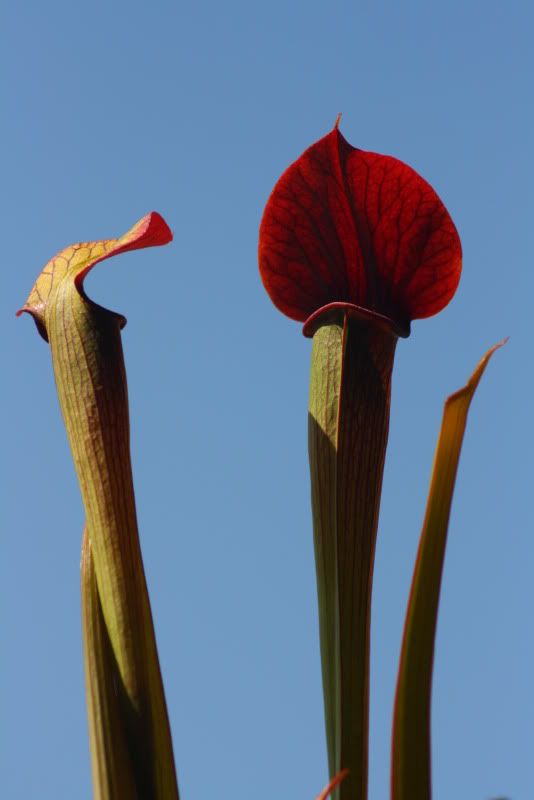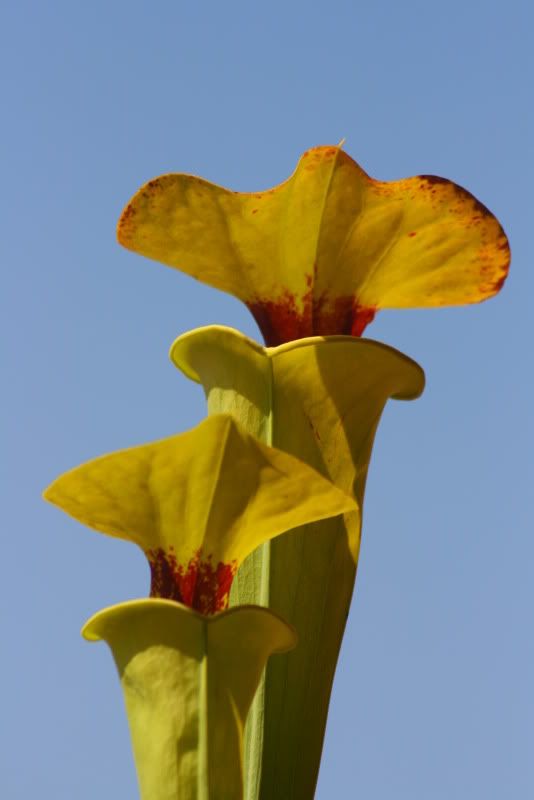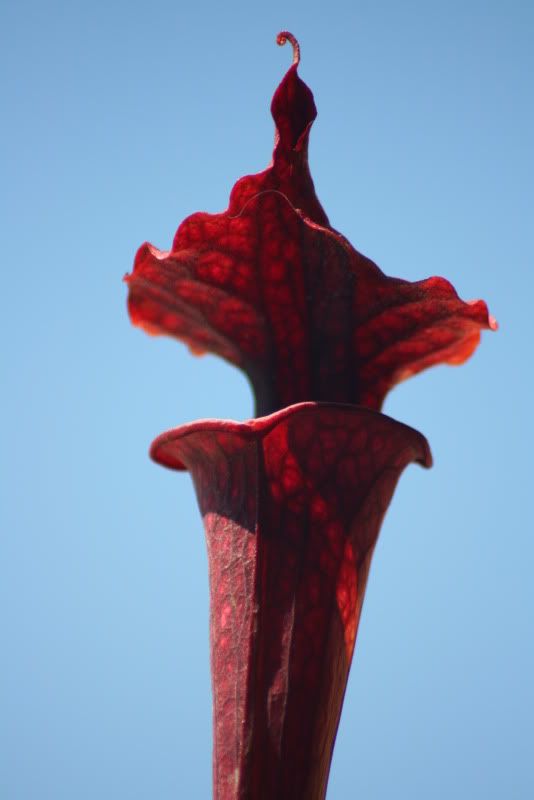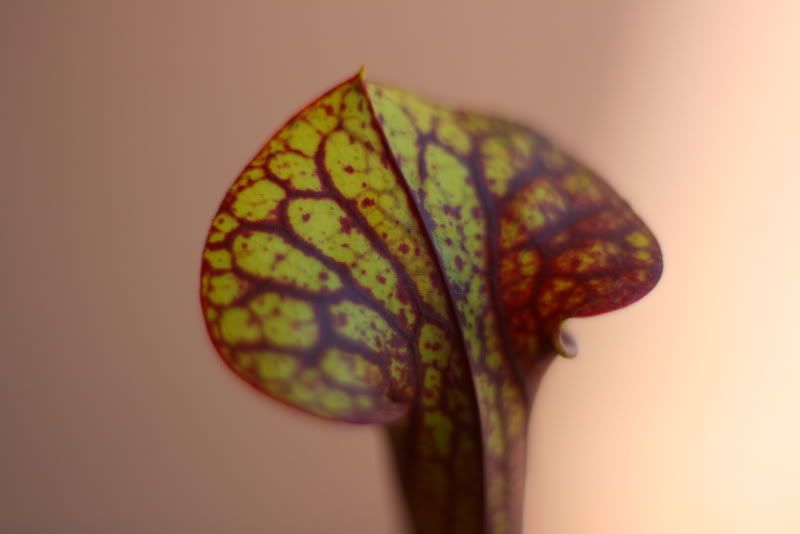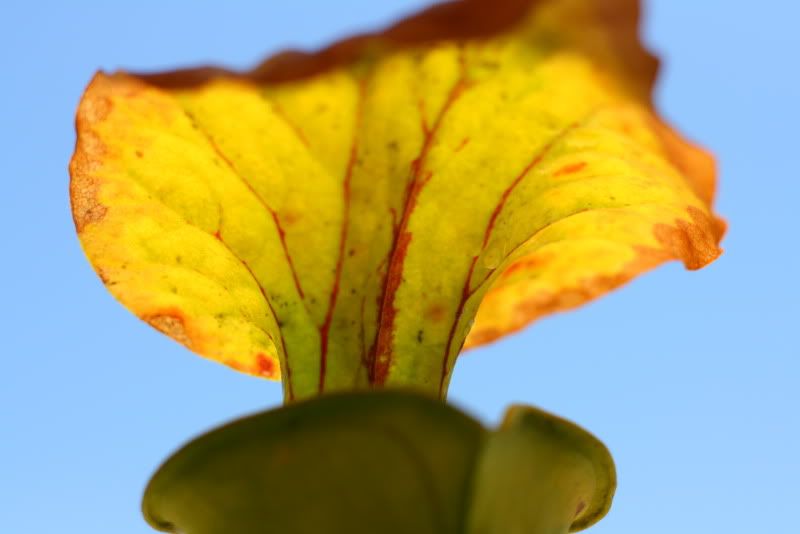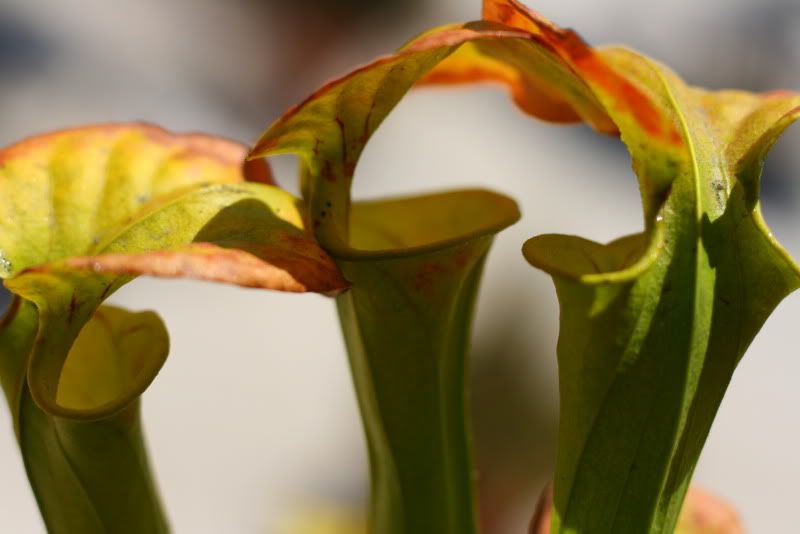- Joined
- Dec 30, 2009
- Messages
- 98
That is a very nice collection that you have. You obviously have a lot of time vested into it. Really pretty. 
Surprisingly that is usually not the case. The main two reasons people's Venus Flytraps die are because they water them with water that has a higher TDS than 50ppm and not giving them enough light. VFT can go over a year without eating anything. Flies are not a source of energy for the plant. They get their energy from the sun through photosynthesis. Flies are merely a form of fertilizer.those are very beautiful...i had a venus fly trap once...turns out it needs to eat...
Surprisingly that is usually not the case. The main two reasons people's Venus Flytraps die are because they water them with water that has a higher TDS than 50ppm and not giving them enough light. VFT can go over a year without eating anything. Flies are not a source of energy for the plant. They get their energy from the sun through photosynthesis. Flies are merely a form of fertilizer.
so they kill the bug/fly etc and then just use the bolus as fertilizer?? sweeeeeeetSurprisingly that is usually not the case. The main two reasons people's Venus Flytraps die are because they water them with water that has a higher TDS than 50ppm and not giving them enough light. VFT can go over a year without eating anything. Flies are not a source of energy for the plant. They get their energy from the sun through photosynthesis. Flies are merely a form of fertilizer.
Actually VFT can dont even eat their lifetime and thrive. As you said, food are mainly forms of fertilizers. I like your collection! may i ask what ur cephalotus folicularis is potted in? If im not wrong, i see some perlite and peat moss. I actually had mine potted in pure LFS with water running through its perimeter 24/7 through a pump, however, i just discovered one yellow leaf and a blackening pitcher. I dont know the cause, but i dont want to take the risk so i repotted it in LFS + peat moss.Surprisingly that is usually not the case. The main two reasons people's Venus Flytraps die are because they water them with water that has a higher TDS than 50ppm and not giving them enough light. VFT can go over a year without eating anything. Flies are not a source of energy for the plant. They get their energy from the sun through photosynthesis. Flies are merely a form of fertilizer.


Yeah, I haven't been on here in a while but Ill try to get them all tagged with genus and species name. That is an awesome Christmas gift!Could you possibly "tag" some of your beautiful photos with genus + species name for the plant? I really love the photos and my wife just became a "carnivorous plant society" member as a Xmas gift! Thank you!
David
I pot my Cephelotus in 5 parts peat moss, 2 parts perlite, 3 parts silica sand. I keep it on the dry side only watering once every 3 to 4 days depending on how dry the weather is. It has been thriving! I have never tried it but from what I have read planting a Cephalotus in only LFS is not a good idea. Its holds in too much moisture and can cause root rot very easily. My plants seem to do best when kept lightly moist never soggy. Also, running water through 24/7 is unnecessary and will kill the Ceph. Hope that helps, good luck!Actually VFT can dont even eat their lifetime and thrive. As you said, food are mainly forms of fertilizers. I like your collection! may i ask what ur cephalotus folicularis is potted in? If im not wrong, i see some perlite and peat moss. I actually had mine potted in pure LFS with water running through its perimeter 24/7 through a pump, however, i just discovered one yellow leaf and a blackening pitcher. I dont know the cause, but i dont want to take the risk so i repotted it in LFS + peat moss.
Trust me. There's almost a whole world of difference between living in Canada and living in New Jersey!QUOTE=SEB;1957489]... As for the plants being outside, that is where they belong. If you do your research, you will find that Sarracenia and Dionea are warm temperate plants that naturally occur in the South Eastern regions of the US. Some Serracenia are even found as far north as Canada and New Jersey. ...





